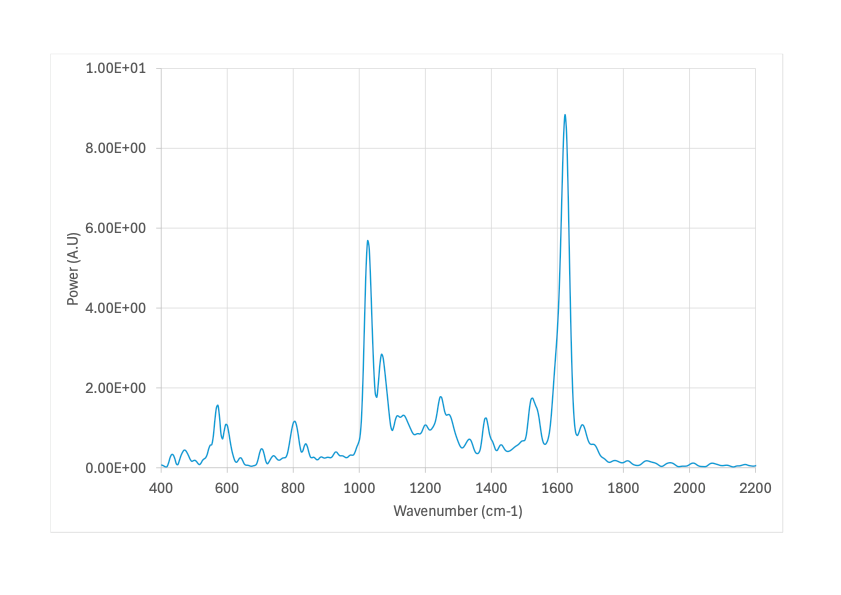Dementia affects millions worldwide, significantly impairing memory, cognition, and daily functioning. It is the leading cause of death in England. As the population ages, experts anticipate an increase in cases. This makes early and accurate diagnosis crucial for better patient outcomes and healthcare planning. Current diagnostic methods rely on cognitive assessments, imaging, and invasive procedures, such as cerebrospinal fluid analysis. These are costly and not always definitive.
Identifying reliable biomarkers in blood samples could revolutionise dementia diagnosis, providing a faster, less invasive alternative. Deep UV Raman spectroscopy offers a promising solution by detecting subtle biochemical changes in serum samples. Unlike conventional Raman methods, deep UV Raman minimises fluorescence interference, enhancing sensitivity and specificity in biomarker detection.
This article explores the potential of deep UV Raman technology in dementia research, detailing its advantages, challenges, and recent findings. With further validation, this innovative approach could pave the way for earlier, more precise diagnoses, ultimately improving patient care and treatment strategies.
Background
Dementia is an umbrella term for brain diseases that negatively impact memory, language, and cognitive abilities, including problem-solving. It also affects other cognitive functions, disrupting daily life.
Experts regard age as the most significant risk factor; consequently, they expect the prevalence to rise with an ageing population. Early identification will inform local and national health and care strategies, as well as dementia research. This should lead to improved patient outcomes. The focus is on developing fast and reliable testing methods for earlier, definitive diagnoses.
Estimates suggest that just under one million people in the UK are living with dementia, with up to a third remaining undiagnosed. Professionals anticipate that this number will rise to 1.4 million by 2040. Life expectancy for those with dementia ranges from five to ten years, depending on the type of dementia and the age of the individual. The associated costs are projected to rise from a forecasted £42 billion in 2024 to £94 billion by 2040.
Understanding the number of people with dementia and the type, such as Alzheimer’s, vascular, or Lewy body disease, among others, is also an essential factor in life expectancy and treatment. Different causes must be identified and addressed in various ways.
Current diagnostic methods
Clinicians currently diagnose dementia by combining methods that assess cognitive function. They rule out other conditions with overlapping symptoms, such as vitamin deficiencies or thyroid issues.
- Medical history and physical examination
- Cognitive and neuropsychological testing
- Neurological evaluation
- Brain imaging
- Laboratory testing
- Psychiatric evaluation
New testing methods targeted at blood or similar fluid samples are highly desirable, particularly if the technique can identify key biomarkers early.
Researchers have identified biomarkers in serum samples for dementia as a possible solution; however, this approach presents significant challenges, including the distinct pathological characteristics of various types of neurodegenerative diseases. Each type progresses through distinct biological mechanisms, such as amyloid plaques, tau tangles, neuroinflammation, and vascular damage. This complicates the identification of a single biomarker. Current methods for biomarker detection, like cerebrospinal fluid (CSF) analysis and PET scans, involve costly and invasive procedures. Moreover, researchers have identified potential biomarkers in the normal ageing process and other neurological disorders, which reduces their specificity. Genetic predispositions, such as the APOE ε4 allele, influence dementia risk, and environmental and lifestyle factors further complicate this issue.
However, the potential benefits of discovering a reliable blood-based method for diagnosing dementia warrant further investigation and research.
To this end, ISI is collaborating on the DEMBIO project, managed through Innovate UK, alongside Fraunhofer UK, the University of Strathclyde, Corewell Health, and Wide Blue. They aim to use deep UV Raman technology to achieve definitive clinical diagnosis by identifying biomarkers in serum samples.
Researchers have used Raman spectroscopy to detect variations in plasma proteins, lipids, and metabolites in patients with Alzheimer’s Disease (AD). This demonstrates its potential to differentiate AD patients from healthy individuals through spectral fingerprinting. They currently use it to identify amyloid-beta peptides and tau proteins, critical indicators of AD.
There are compelling arguments for using Raman spectroscopy for dementia detection; it’s a minimally invasive, rapid and label-free method for detecting biochemical changes, and has high sensitivity, especially when combined with Surface Enhanced Raman technology. However, there are also several drawbacks. These include spectral overlap, which complicates data interpretation, particularly because biologics generate significant fluorescence that can mask Raman signals.
Deep UV Raman, however, reduces the fluorescence effect. ISI has developed an instrument that operates at 236 nanometres, far into the UV range where fluorescence and Raman signatures become spectrally separated, allowing for analysis of complex biological materials. Consequently, it presents a compelling solution to the challenge of serum-based biomarkers.
Typical serum dementia sample acquired using Odin, ISI’s compact deep UV Raman spectrometer.

Typical serum dementia sample acquired using Odin, ISI’s compact deep UV Raman spectrometer. Image Credit: IS-Instruments
Although final measurements are still being taken, initial results have been very encouraging. They indicate that deep UV Raman can detect changes in serum samples, suggesting the presence of neurodegeneration. The next step will be to conduct more extensive clinical trials across a broader demographic to gather further data and ascertain the potential of deep UV Raman for this application more accurately. This is exciting progress, and we hope to use it to determine not only the presence of neurodegenerative diseases but also to assist in identifying which disease. This will enable earlier detection and potentially better outcomes for patients. Dr. Michael Foster, Director at IS-Instruments.
Funding Details
DEMBIO was an SBRI competition launched in July 2023 and funded by Innovate UK. It invited organisations to apply for a share of £6 million, inclusive of VAT, to develop or repurpose platform technologies. Researchers and developers would use these technologies to transform clinical trials and promote the biomarker-guided development of dementia therapies. The application of innovations in wet biomarkers, data, and tools and services will support the aims of the UK government’s Dame Barbara Windsor dementia mission. You can find more information on the initiative here.